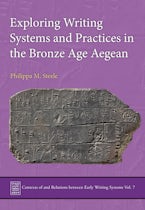The applications of zooarchaeological research can go far beyond the realms of the lab or the site report. These 18 papers are all concerned with the contributions archaeozoologists make to specific problems encountered in the management and conservation of our natural and cultural heritage. The volume is divided into two parts: Part 1 looks at Zooarchaeology and Wildlife Conservation Issues. Contributors explore a range of subjects, including: how information on past environments can be used to explain the behaviour and distribution of species in the present; whether it is feasible to reintroduce game into areas where the species have become locally extinct; and how collecting and reporting procedures are related to the interpretation of zooarchaeological data. Part 2 covers Archaeozoology and Heritage Management. Contributors discuss the position of archaeozoologists in museums, universities, and private archaeological companies; the role of archaeozoologists in assessing and selecting sites for protection or excavation; and the problem of the deterioration of zooarchaeological material currently held in collections.
Preface (Peter Rowley-Conwy, Umberto Albarella and Keith Dobney)
1. Zooarchaeology in Nature Conservation and Heritage Management (Ina Plug and Roel C. G. M. Lauwerier)
Zooarchaeology and Wildlife Conservation Issues
2. Pristine Benchmarks and Indigenous Conservation? Implications from California Zooarchaeology (Jack M. Broughton)
3. The Use of Archaeofaunal Data in Fish Management (Elizabeth J. Reitz)
4. Holocene Faunas of the Eastern Sahara: Zoogeographical and Palaeoecological Aspects (Joris Peter and Nadja Pollath)
5. Influence of Climate on Sexual Segregation and Cub Mortality in Peniglacial Cave Bear (Mietje Germonpre))
6. A Zooarchaeological Reassessment of the Habitat and Ecology of the Ibex (Capra ibex)) (Nellie Phoca-Cosmetatou))
7. Zooarchaeological Research in Support of a Reintroduction of Bison to Banff National Park, Canada (E. Gwyn Langemann))
8. The Interface between Conservation Biology, Palaeontology and Archaeozoology: Morphometrics and Population Viability Analysis (Hannah J. O'Regan and Alan Turner)
9. Hunting in Medieval Moldavia: Archaeozoological Data (Luminita Bejenaru, Carmen Tarcan and Simina Stanc)
10. Marine Turtles of the Past: A Vision for the Future (Jack Frazier)
11. Archaeozoology, Law Enforcement and Nature Conservation in the Republic of South Africa: Perspectives from the Transvall Museum, Pretoria (Shaw Badenhorst and Ina Plug)
Archaeozoology and Heritage Management
12. Bone Diagenesis: Implications for Heritage Management (Matthew J. Collins, Christina M. Nielsen-Marsh, Jen Hiller, Colin I. Smith, James P. Roberts, Richard V. Prigodich, Tim J. Wess, Janos Csapo, Andrew R. Millard and Gordon Turner-Walker)
13. Monitoring the Quality of Archaeological Bone in situ (Miranda M. E. Jans, Liesbeth E. M. Theunissen, Robert M. van Heeringen, Sander A. Smit and Henk Kars)
14. Archaeozoology and the Transition from Socialism to Capitalism: the Case of Roman Aquincum (Alice Choyke)
15. Private Investigations - Working in a Commercial Setting (Jorn T. Zeiler)
16. Tocuila and its Research/Public Outreach Program (Joaquin Arroyo-Cabrales, Luis A. Morett and Oscar J. Polaco)
17. The Hundred Years Rule - A Century of Curating Archaeological Animal Bones in Britain (C. Leslie Cram)
18. Lifting the Iceberg - Bone Info and the Battle to Save Archaeological Information (Roel C. G. M. Lauwerier and Lisette S. de Vries)












